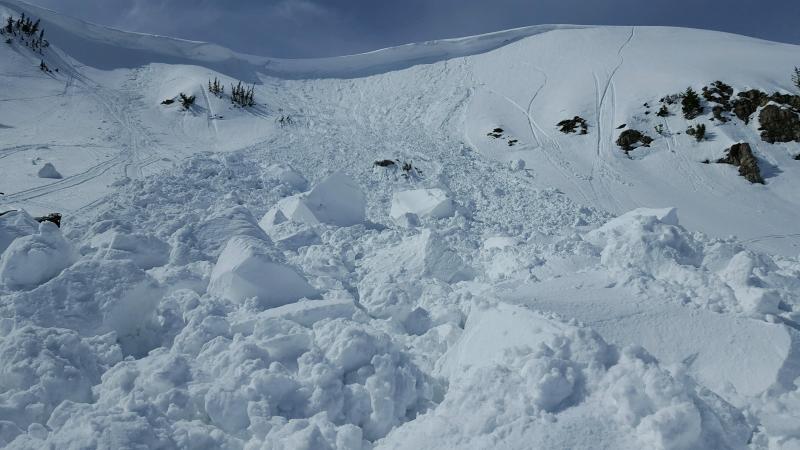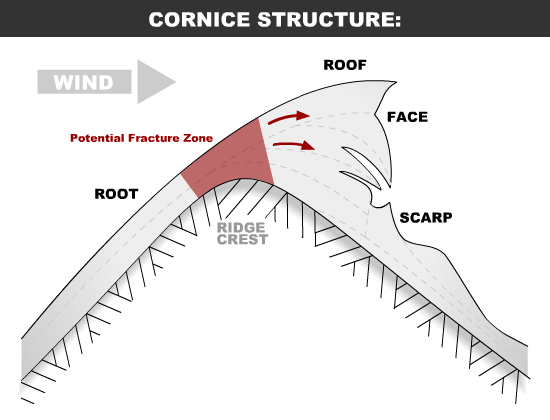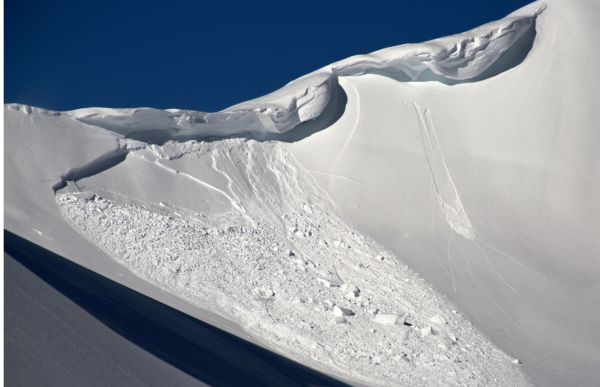The release of an overhanging mass of snow formed by wind deposits.
Cornices grow through the winter on the leeward side of wind exposed ridges and summits. Cornices range from small wind lips of soft snow to overhangs of hard snow larger than a school bus. They can break off the terrain suddenly and unexpectedly and can sometimes be triggered from a distance. Overhung cornices can pull back further than expected onto a flat ridge top and catch people by surprise. While large cornices are quite destructive by themselves, even a small cornice can be deadly if it carries you over a cliff or rocky terrain below. The impact from a Cornice Fall can also easily trigger slab avalanches on steep slopes below. Travel cautiously on corniced ridgelines, giving cornices or unknown edges a wide berth. Limit your exposure to slopes below cornices. Cornice Fall is most likely during periods of significant temperature warm-up or rapid cornice growth due to wind loading.
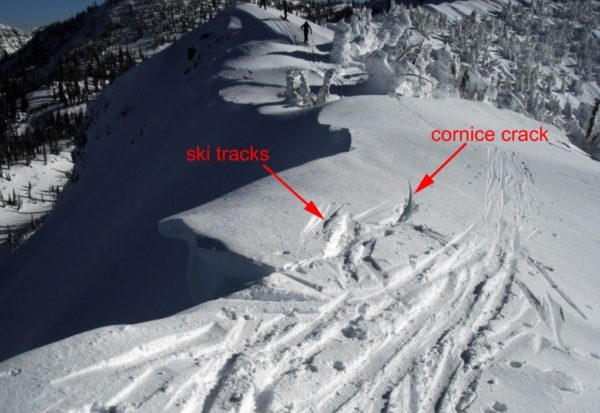
Many Cornice Fall accidents are caused by people venturing too far out onto corniced ridgelines. Credit: Flathead Avalanche Center
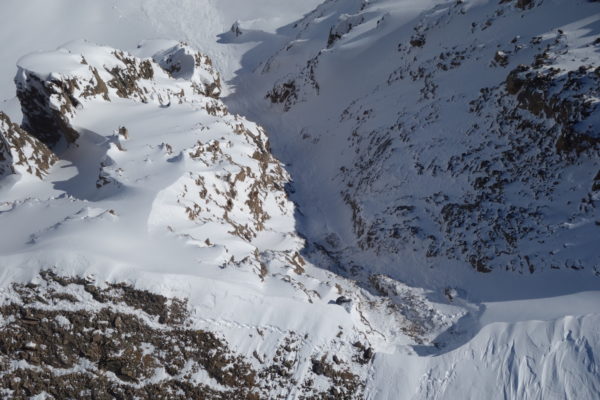
Cornices also pose dangerous overhead hazards. This Cornice Fall swept several climbers down a steep chute. Credit: Colorado Avalanche Information Center
